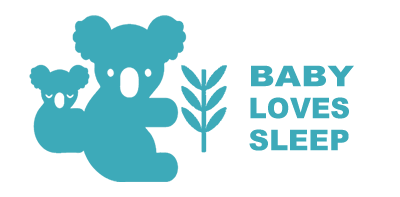Your Cart is Empty
$8 FLAT RATE SHIPPING USA | PAY IN 4 WITH SEZZLE
$8 FLAT RATE SHIPPING USA | PAY IN 4 WITH SEZZLE

Keep Your Baby Sleeping Just Right During the Cold Chilly Winter
July 18, 2017 3 min read
Dressing babies for sleep time for the chilly winter nights can sometimes be tricky—after all they can't exactly tell you if they're too hot, too cold or just right.
As parents we can either overdo it or unintentionally under dress our babies.
For newborns especially, its important to get this right. Over dressing could potentially run the risk of overheating and under dressing could mean loss of precious calories, especially in the early weeks when you're trying to increase or maintain precious caloric weight gain.
Did you know that newborns use up precious calories to retain body heat?
A newborn’s body temperature goes up and down quickly as the temperature around them changes. Calories that are needed for growth can be spent trying to keep warm or stay cool. Therefore, it's really important to help your newborn keep their body temperature normal by dressing them appropriately.

When does your baby self-regulate body temperature?
Not many know that babies under the age of 15 months haven't yet developed the ability to regulate their body temperature. For babies, feeling cold in the night can be one of the reasons for night wakings. A baby's fight or flight mechanism to feeling cold is to roll-over onto their tummy as a way to protect their internal organs. If your baby is in some form of a swaddle wrap or suit that restricts their arms, this can pose a risk.
Tips on keeping your precious baby "sleeping right" this Winter
Room Temperature
There is much advice out there on what is a comfortable room temp for your baby's room. Knowing your baby's general room temperature helps you to work out how to dress your baby for sleep.
Many experts recommend that the temperature in the room where a baby sleeps be kept between 68–72°F (20–22.2°C).
You may consider using a fan in your baby's room. The use of a fan in your baby’s room may reduce the risk of SIDS by circulating the air and lowering the baby’s risk of “re-breathing.” (This won’t make the room colder; fans do not cool the air but simply move it around. In the Winter season, keep the fan on low and pointed away from your baby.)

Bedding
With bedding, it's recommended to use sheets and blankets that are made of natural materials such as cotton or bamboo. The reason for this is that natural materials are breathable and won't cause baby to sweat unlike polyester materials which causes babies to sweat even when cold.
If using blankets, make sure to firmly tuck blankets under the sides of their bed mattress to ensure blankets don't come off. But never tuck a sleeping bag onto the sides of their crib, as this may cause them to become stuck in a risky position.
Sleepwear
Make sure baby is dressed appropriately. Similarly to bedding, try to use sleepwear clothing made only of natural materials, cotton or bamboo, to ensure breathability.
We all know babies from 3 months onwards will start to roll around while they sleep and blankets become a bit useless. You may use a sleep sack or sleeping bag to keep babies warm in the night.
For colder climates, you may consider using a winter rated sleep sack or sleeping bag on your baby. A winter sleeping bag for babies serves the same purpose as what a duvet does for adults.
Check the TOG rating when choosing winter sleep sacks or sleeping bags. A TOG rating is used (mainly in European countries) for measuring the warmth levels of duvets (doonas) and baby sleeping bags. The higher the rating, the warmer it will be and the lower the rating, the cooler or lighter it is.
Find out more about TOG rating
The Sleepy Hugs range of winter sleep sacks are TOG rated.

Too hot or too cold
Listen and watch for signs if your baby is too cold or too hot. Touch your baby in the forehead, back of neck and chest to check if they are too hot or too cold.If you notice sweating, damp hair, flushed cheeks, heat rash, rapid breathing, and/or restless sleep, your baby may be too hot.
Avoid over-bundling. Too many layers of clothing and covers can cause your baby to overheat and increase their risk of SIDS. A sleep sack or sleeping bag is a safe option over their sleep clothes or pajamas. Be particularly cautious if your baby is sick, if they have a fever, the added layers may further increase his body temperature.
Your baby will often communicate with you by way of waking and or crying if something is not right, so don't dismiss your baby's crying without checking first. As with most things when it comes to your precious babies, please use common sense.
And remember, back is best. The safest place for your baby to sleep is on his back. The AAP recommends that healthy infants be placed on their backs for sleep during the first year of life. However, it's especially important during the first six months when the incidence of SIDS is highest.
Subscribe
Sign up to get the latest on sales, new releases and more …
